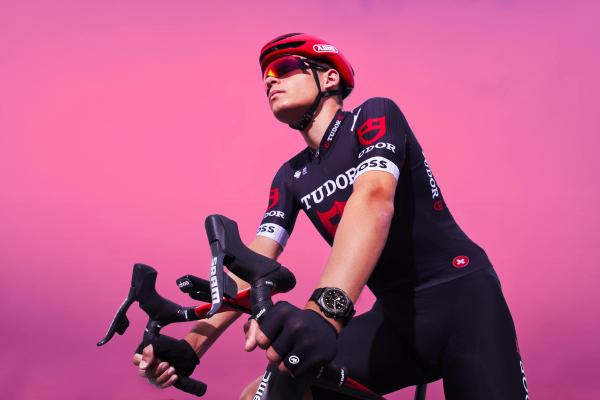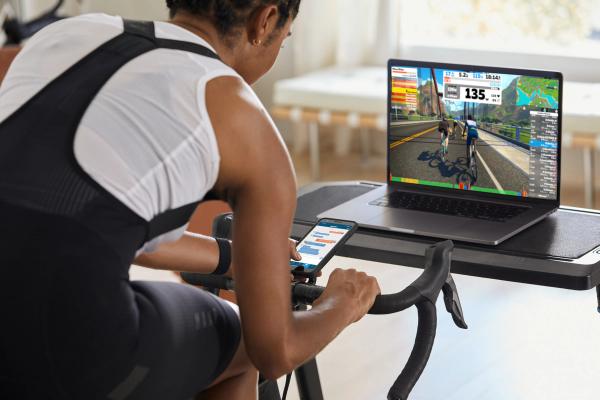Retro vs modern: How does 54-year-old bike gear compare to the cutting edge of modern technology?
Simon Richardson aims to discover just how much difference there is between top-tier components from two very different eras
Alex Hunt
Junior Tech Writer
We have taken a look at retro vs modern bikes a number of times on the GCN YouTube channel, but when we decided to compare groupsets from past and present, we just had to opt for Campagnolo.
This is a brand with heaps of heritage, and the inventors of the quick release and derailleur, among other things. Not only that, but the brand still holds the most professional cycling wins, ahead of Shimano and SRAM, many of which are thanks to the legend himself Eddy Merckx.
Since Merckx's day, groupsets have seen astronomical advancements in design and technology. We sent Simon Richardson to find out what that means out on the road.
First of all, what is different about the two bikes?
Before we get into the groupsets, let's look at the bikes we're comparing. Representing the cutting edge of modern tech, we've got the Condor Leggero, equipped with Campagnolo Super Record EPS. On the retro side, we've got a replica 1969 Eddie Merckx, equipped with Campagnolo Nuovo Record, the top-of-the-range groupset of its day.
A quick glance over the two bikes reveals that few things besides the basic double-diamond frame design have remained the same. Steel has been replaced by carbon. Round tubes replaced by aero profiles. Skinny rims and tyres replaced with wide ones.
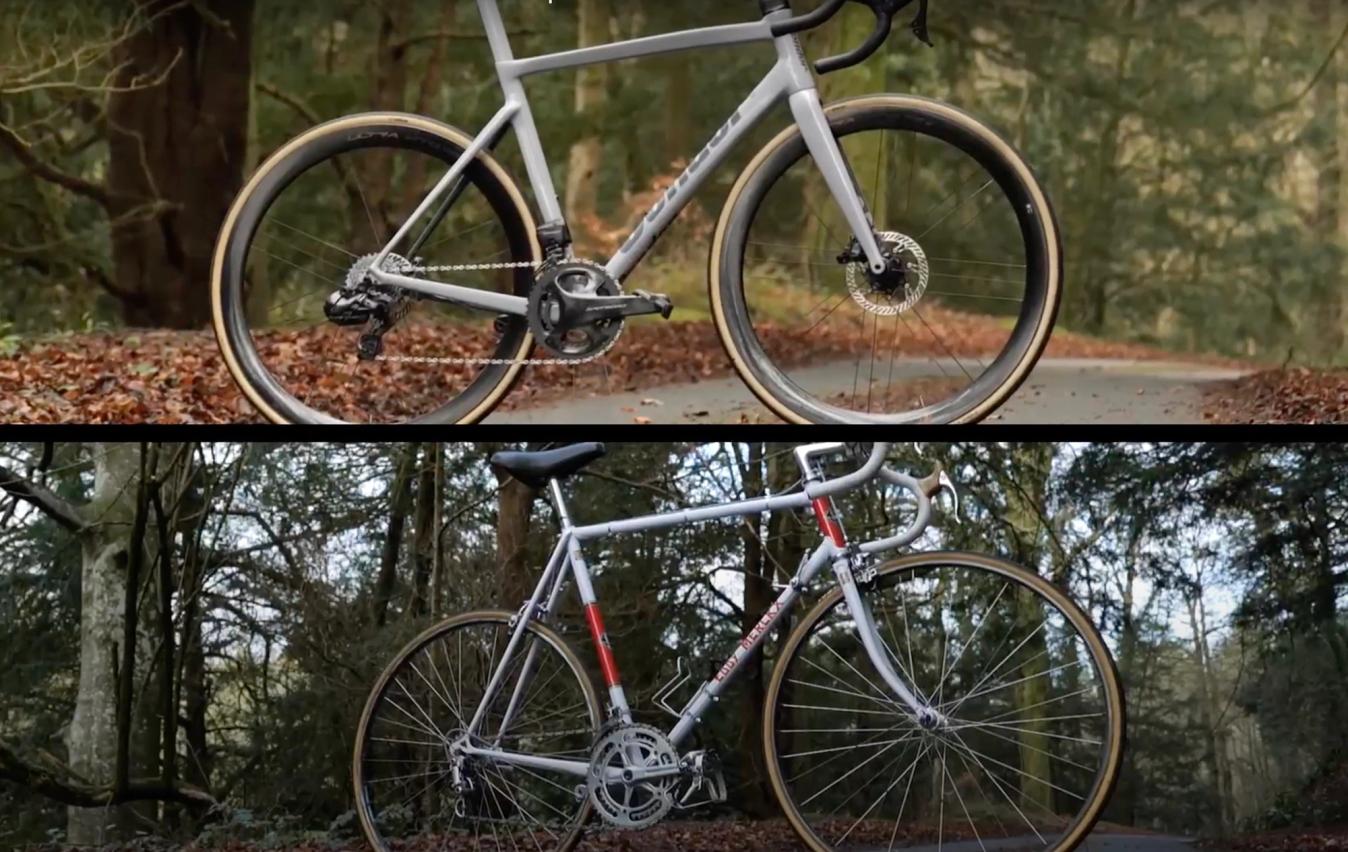
© GCN
There isn't a lot on these two bikes that is the same, in 54 years cycling has seen a massive leap forward in technological design
These days, we know how important aerodynamic efficiency is when cycling. Wind resistance makes up for the overwhelming majority of the force that slows you down on a bike, so to reduce it, designers have spent the past few decades refining new shapes, profiles and even rider positions. The Condor that Si is riding, for example, has aerofoil tube shapes that have been specially designed to cheat the wind.
In 1969, aerodynamics was barely a consideration. The main aim in the Merckx era was to reduce the weight of bikes, with some riders even drilling holes in components to reduce the amount of metal they must carry up the climbs.
What has Campagnolo changed since 1969?
Perhaps the clearest demonstration of how far technology has come is in the groupsets that these two bikes use.
The retro groupset in question is the Campagnolo Nuovo Record, and for the time it was the highest spec groupset on offer to the professional peloton. A double chainring up front was matched to a five-speed cassette at the back giving a choice of 10 gears for riders to choose from.
To change gears riders would have to take their hand away from the bars and use a downtube-mounted shifter to select the gear they want. This was a fine art, and it was easy to select the wrong gear by mistake. The cycling industry was yet to index gears, meaning all the fine-tuning to get the gears lined up was done on the bike as you rode.
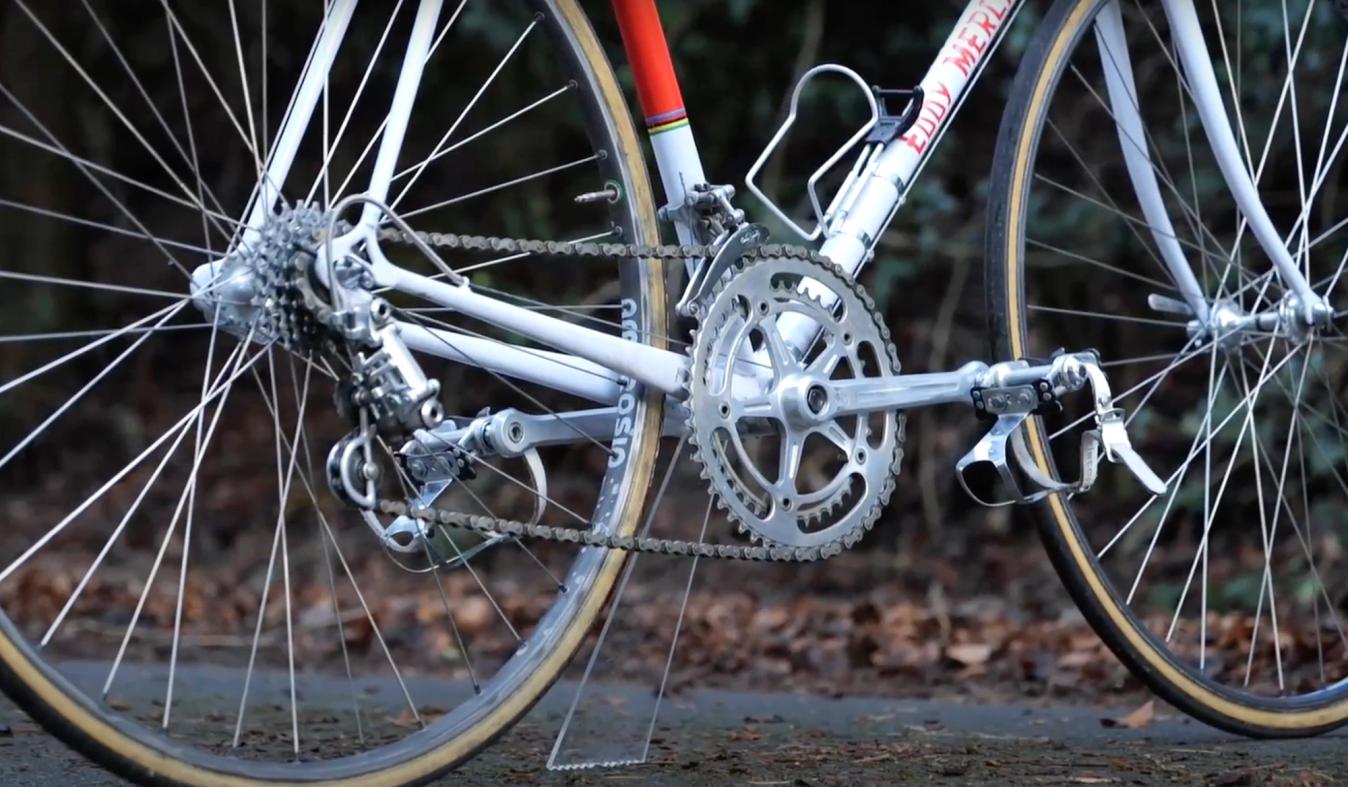
© GCN
The retro group of Campagnolo Nuovo Record had a very close ratio cassette and a 'small' inner ring that was 42 teeth
The brakes are part of the groupset too, and these rim brakes will be a familiar sight to any road cyclist. They might not be available on the top-end bikes of 2023, but until recently rim brakes were king. Incredibly, the design has gone pretty much unchanged for decades, until hydraulic disc brakes took over. Disc brakes offer more powerful and predictable braking in all conditions, require less force at the levers, and save the rims from wear.

© GCN
Super Record EPS wireless is the latest in drivetrain tech with no cables or wires between the shifters and the derailleurs
Modern groupsets are a world apart from the simple mechanisms of the 1960s, and for this Campagnolo Super Record EPS, the clue for the biggest change is in the name: this is Electronically Powered Shifting. No longer are the gears changed by cables and downtube-mounted levers. Instead, the rider can change gears at the press of a button, situated just behind the brake lever. This action is then wirelessly transmitted to either derailleur where a small but powerful motor moves the derailleur into the perfect location across the 12-speed cassette.
More gears, better gear ratios?
Super Record EPS wireless has more than double the number of gears the Nuovo Record had. This means Campagnolo can offer a wider spread of gears that allow you to ride up gradients that would have you off your bike and walking back in the Merckx era.
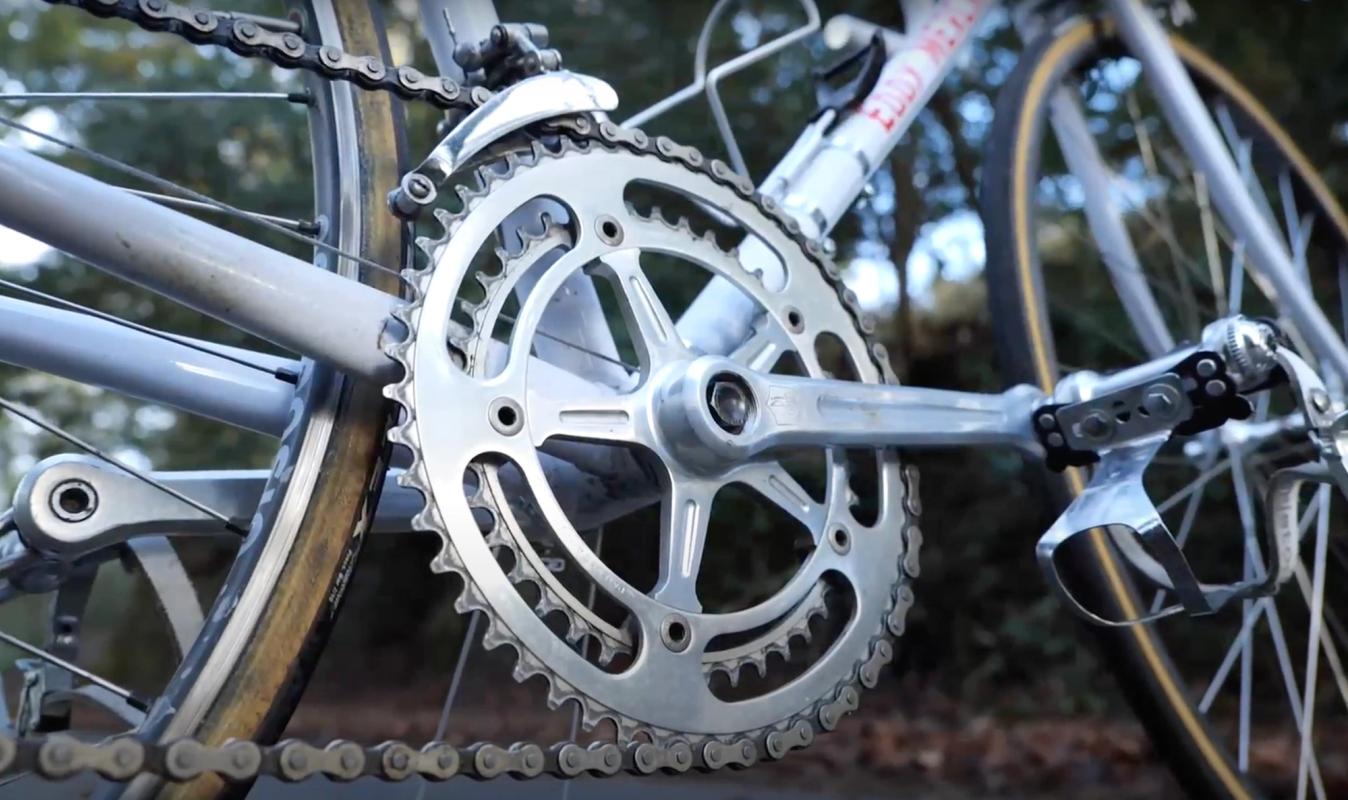
© GCN
There was no such thing as an easy gear back in 1969 with the inner ring still coming in at a massive 42 teeth and the biggest sprocket at the back a tiny 24 teeth
The modern Super Record cassette has a spread from 10-29 teeth, which for a modern groupset is still considered fairly small. This is then paired with a double chainset with 48 and 32 teeth. This provides gearing that would have been unheard of in 1969, whilst preserving the tight gaps between gears that road cyclists need to help them find the right cadence at any speed.
On the retro bike, the easiest gear at the back is a 24-tooth sprocket which is paired with a massive 42-tooth ‘small’ ring at the front. This gear is almost twice as hard as the easiest ratio on the modern bike. The reality is that back in 1969 the style of riding and the terrain being ridden were very different.
Although the pros have been tackling the slopes of Alpine passes for over 100 years, only recently have race organisers sent them up the relentless double-digit gradient climbs of the Zoncolan or the Angliru. These climbs are savage and when they were first used in the late 90’s and early 2000s, a change in approach was needed. Smaller gears were the only way that even the strongest pro riders would be able to tackle such demanding climbs.
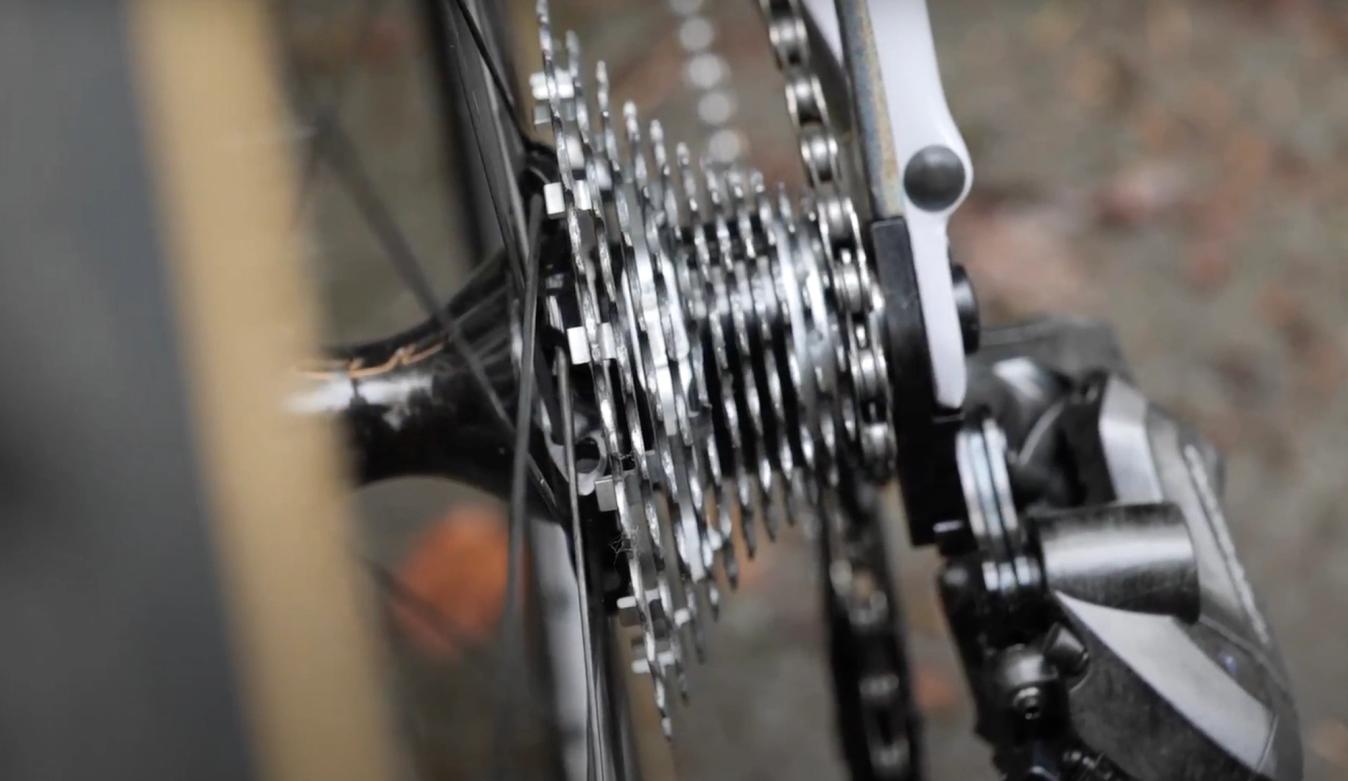
© GCN
Modern 12-speed cassettes have a far bigger spread of gears giving riders the gears they need to tackle ever steeper climbs
Another thing that has changed over the years is how riders prefer to pedal. If you have ever seen any vintage race footage from the Merckx era you will know that on alpine climbs that cadence of riders was incredibly low. This form of high-torque riding puts a lot of stress on the rider's muscles and tests their muscular endurance. In the modern era, thanks to better gearing, riders now spin a far higher cadence, sharing the load between their muscles and their cardiovascular system. The end result is that this style of riding has seen the speed at which mountain climbs can be tackled increase dramatically.
To find out just how much difference having wider ratio gears makes, Si decides to take on a brute of a climb in south Wales before carrying out a head-to-head time trial. To find out how he gets on and just what the differences really equate to out on the road make sure to give the video at the top of this article a watch.
For more retro vs modern continent head over to the GCN YouTube Channel and don’t forget to comment your thoughts down below.
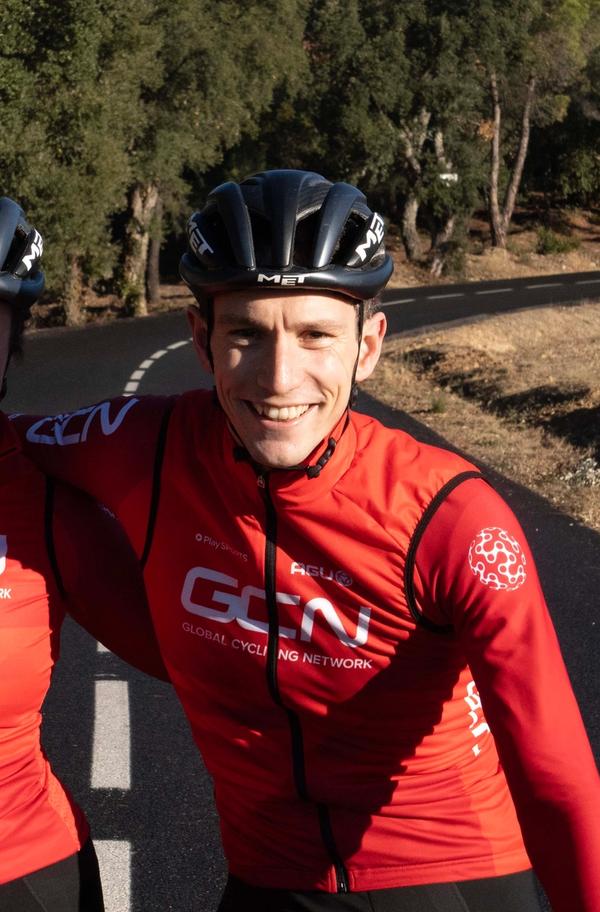







.jpg?w=600&auto=format)
